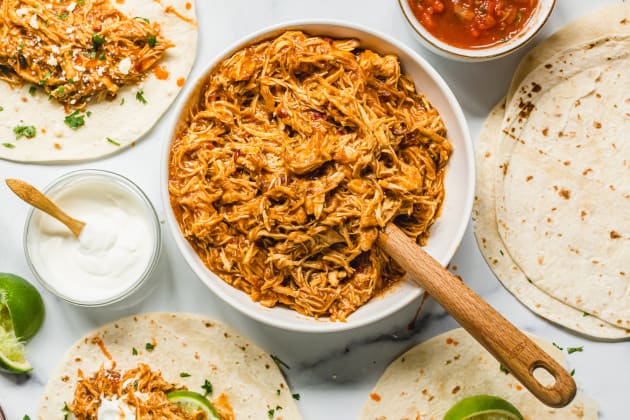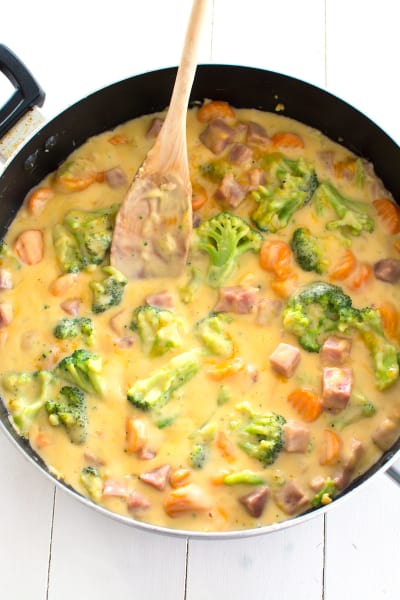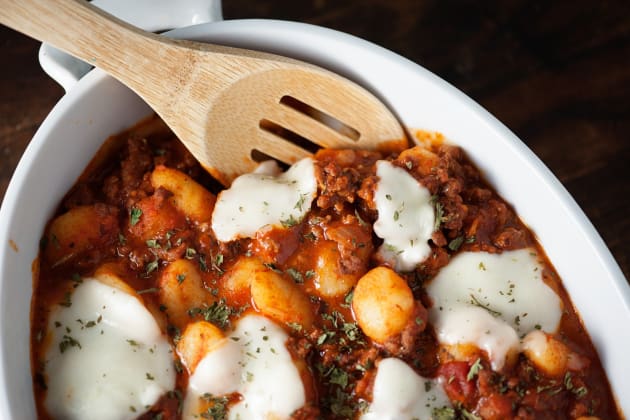What is the Best Wood for Kitchen Utensils? Our Guide
Nicole AustinA helpful guide to figuring out how to outfit your kitchen.
I’ll admit it — it took me a while to appreciate wooden kitchen utensils.
When I first lived on my own, I bought whatever I could afford for my apartment, and the quality was lacking.
I found myself with wooden spoons that were separating or cracking, and in frustration, I slowly replaced them with plastic and metal.
(By the way, proper use and care of wooden kitchen utensils will make them last a long time, so this issue was largely my own fault! But we’ll get to that later.)
It took awhile for me to get back on board with wood for my kitchen.
I have since started to accumulate more over time, and even discovered (many years later than I would like to admit) the little trick of a wooden spoon over a boiling pot.
In case you also didn’t know, placing a wooden spoon across the top of a boiling pot can help contain the foam and bubbles from bubbling over by containing them in the pot.
Wood is more heat resistant than metal, so it stays cooler and helps to burst the hot bubbles that reach the top of your pot.
The fact that a wood spoon does not conduct heat keeps the situation from getting worse by bringing even higher temperatures into the equation.
It also breaks the tension of the bubbles by being a stable surface that is water repellant.
I don’t want to be dramatic, but ever since I got a glass top stove, this is a lifesaver.
It’s time consuming and frustrating to wait for the stove top to cool so you can scour away blemishes before you can finally relax after cooking and eating.
You already have dishes and packing up leftovers to do — just typing all this has me ready for a nap.
So, even if you don’t come to enjoy the merits of wooden utensils over your current set, I strongly suggest having at least one wooden spoon on hand for the next time you’re boiling pasta or potatoes.
How Do I Know If Wood is “Hard” or “Soft”?
The first thing to be aware of when discussing wooden cooking utensils is that there is a primary classification for wood types.
This is broken down very simply into two categories: Hard wood and soft wood.
However, figuring out which wood is hard and which wood is soft is not as simple as it may seem.
Some wood that seems hard is actually soft, and some wood that seems soft is actually hard.
So, how can you tell which wood is which?
The distinction between the two types of wood is actually based on their method of reproducing.
That’s a little unexpected, right?
Softwoods (gymnosperms — you won’t be tested; you don’t have to remember this) are generated from conifer or cone-bearing trees which produce seeds that are called “naked” seeds.
Simply put, this means that there is no outer coating (like a fruit or a nut).
Hardwoods (angiosperms) are deciduous trees wherein the seeds have some type of covering or surrounding fruit.
All fruit and nut bearing trees are included in this category, with the exceptions of trees such as bamboo and palm.
What is the Difference Between Hardwood and Softwood in Products?
You may now have a pretty good understanding of the difference between hard wood and soft wood when it comes to trees — or maybe that all went over your head — but how does this apply to everyday life and household products?
Softwoods are lighter and less dense.
They are less expensive, lighter in color, and are often seen on construction framing such as walls, ceilings, doors, and windows.
Examples of this type of wood in your home are cedar, pine, fir, spruce, and cypress.
Hardwoods are typically more dense and heavier.
They are also more expensive, and come in a wider variety of wood grain that can also run darker for a more stunning contrast.
In your home, you will see this kind of wood used for flooring, furniture, cabinetry, and utensils.
Examples of hardwoods you may be familiar with are maple, ash, birch, cherry, oak, and aspen.
What Type of Wood is Better for Kitchen Utensils?
Hardwoods are generally the preferred wood type for kitchen utensils.
While both types of wood can and are used, hardwoods have certain qualities that manufacturers tend to prefer.
There are several types of hardwoods that can produce well-crafted spoons and kitchen tools, making it a popular choice for quality.
Plus, it's a renewable resource while plastic utensils and other manufactured products are worse for the environment.
Wood utensils made from hardwood are:
- Durable and sturdy. Because hardwood is typically denser and stronger than softwoods, they allow for more design freedom. A properly cared for wooden kitchen utensil can last for decades, whereas a softwood utensil may erode with repeated use and washings. Hardwoods stand up better when exposed to water.
- Long-lasting. When you consider the multiple household uses for hardwood products, you see that they stand the test of time. Flooring, for example, is used continuously. Hardwood is more resistant to scuffs and scratches, and doesn’t break down as easily as soft wood.
- Visually appealing. Hardwoods can boast striking colors and contrasts that make them beautiful and unique. Variations in grain and patterns in hardwood make for utensils or other products that are desired by consumers because they stand out among the rest.
Hardwood utensils make excellent gifts because they are not only practical but have a customized or specialty appearance.
However, even though hardwoods share the same qualities, this does not mean that all hardwoods are appropriate for kitchen utensils.
Some wood, such as red oak, is a hard wood but it is extremely porous.
This means that it will easily absorb liquids, which is a very undesirable trait for a kitchen utensil that will likely be exposed to water and other fluids frequently.
Some hardwoods like chestnut have a high tannin count.
Tannins are bitter, astringent compounds that are found in several natural settings, such as bark, leaves, wood, and fruit.
Tannins dry out your mouth and give it a sudden, almost shocking bitter flavor.
Think of young red wines or strong tea leaves.
It goes without saying that the transfer of these tannins would not be desirable in many dishes, so avoiding kitchen products that could impact the flavor is advised.
How to Properly Clean Wooden Utensils
Proper care and use will keep your wooden utensils and kitchen items in great shape, helping them last for years.
The first and most important tip for cleaning wooden utensils is to steer clear of the dishwasher.
(This, by the way, is where I went wrong.)
You may think, as I used to, that wood is absorbent and therefore, bacteria and germs will multiply.
Well, you’re not wrong about the absorbency of wood.
Anyone cooking with wood will attest to their tendency to absorb oils and liquids.
Many people have replaced their wooden utensils for plastic, metal, or silicone, assuming that they have invested in a product that is cleaner and more hygienic.
But, surprisingly, studies have concluded that wood is actually much more sanitary than plastic.
While bacteria does enter the wood, the naturally anti-microbial properties in wood kill it over time.
So, bacteria that is absorbed by the wood has reached its final resting place most of the time.
That’s pretty amazing!
Bearing this awesome fact in mind, users of hardwood utensils and cutting boards should know that the best way to clean their products is to clean it immediately after use with hot water and soap.
Drying your utensils well will ensure that the bacteria trapped within is stopped as soon as possible.
It is recommended to allow your wooden utensils to dry for 24 hours after washing by placing them in a dry space with proper air flow, so keep them off wet kitchen surfaces like towels or drying mats.
You will want to avoid soaking wooden utensils — when dealing with stubborn stains, multiple washings should eventually get them out.
What Are the Best Wooden Kitchen Utensils?
When seeking out wooden utensils and cutting boards, I like to check reviews from products that real people, like me, own and use.
Reviews are an unbiased way to see how a product performs against the manufacturer’s claims, so you know what you’re getting into most of the time.
These highly-reviewed bamboo utensils achieve high marks for many reasons.
Bamboo will not cause scratching or wear on your expensive cooking surfaces.
Additionally, it’s heat-resistant and anti-microbial, making it a good choice for the home cook.
Lightweight and durable, this smooth set boasts a high ranking among customers for high quality at an exceptional value.
(By the way, bamboo isn’t technically a hardwood — it’s in a category all its own. But it's an excellent choice — and the wood of choice for many consumers — because it makes beautiful kitchen utensils that has all the benefits of a hardwood.)
If you’re looking for a strong, sturdy beech wood utensil set, we’ve got you covered.
Beech wood forms a long-lasting, professional quality product that is excellent for stirring and mixing.
Easy to clean and thick, these spoons are durable according to customers and are comfortable to hold and use.
For a more artisan kitchen experience, or as a beautiful housewarming gift, teak wood kitchen utensils are an impressive choice.
The high performance is a feature that is appreciated by customers when purchasing a stunning set of beautifully colored kitchen utensils.
Of course, no wooden kitchen set is complete without a set of wooden cutting and serving boards that are also available in extra-large sizes to accommodate any of your cooking needs.
As stated above, a wooden cutting board is considered more hygienic and safer than its plastic or silicone counterparts, making it an ideal choice for people concerned about bacteria, microplastics, and foodborne illnesses.
Beautiful, sanitary, and easy on your valuable knives, these bamboo cutting boards are durable and easy to clean with just soap and hot water.
The only downside, compared to plastic or silicone utensils, is the amount of hand washing.
That keeps a lot of people from making the switch, so we get it.
But there are a few reasons a good wooden spoon could become your new best friend, long term.
The all-natural wood materials last for many years without warping, cracking, or splitting, and the larger versions are slip-resistant for safety.
Real-life users like you and me say that the board is worth the money, larger than some competitors at a better price point, is lightweight enough for everyday use, and makes an excellent serving tray for guests.
People also love the groove around the edges, which makes it easier to carry and use.
If you have shied away from wooden kitchen utensils and other kitchen items because of a bad experience or concerns for safety — like I did — maybe it’s time to think again!
Enjoy wood in your kitchen again with your newfound awareness of what woods to look for when shopping.
Nicole is a self-published author of fiction novels, and a lover of food and spending time in the kitchen with her six children. She lives in coastal Maine where she loves exploring new recipes especially those that can save time, money and wow a crowd.
Tags: Kitchen Tools, FAQ, Safety, Cleaning






